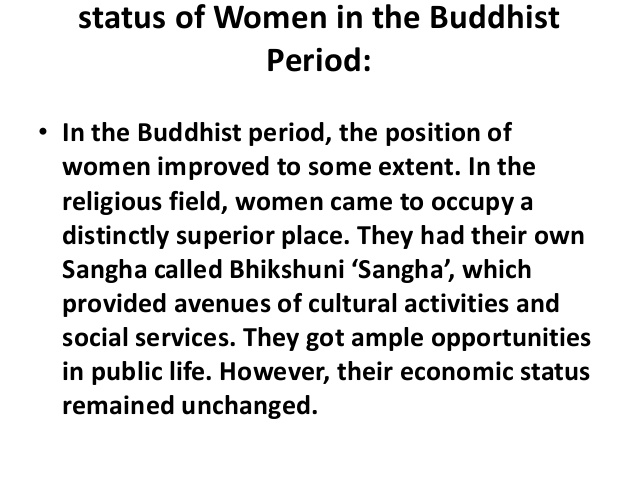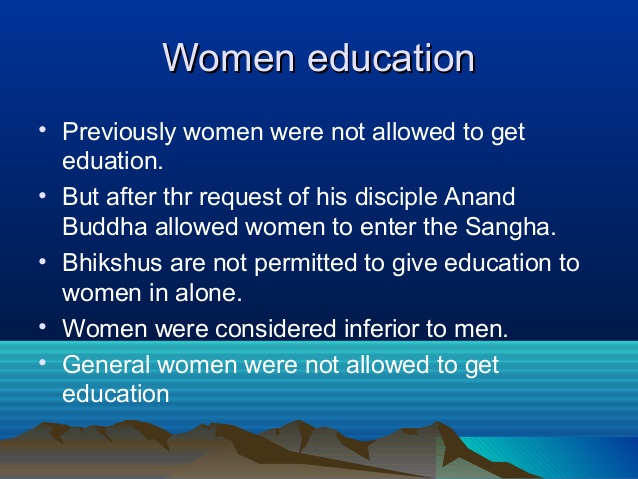Women in the Buddhist Period
Relevance: Prelims/Mains: G.S paper I: Indian Society & Medieval History
The status of women improved a little during the Buddhist period though there was no tremendous change. Some of the rigidities and restrictions imposed by the caste system were relaxed. Buddha preached equality and he tried to improve the cultural, educational and religious statuses of women. During the benevolent rule of the famous Buddhist kings such as
Chandragupta Maurya, Ashoka, Sri Harsha and others, women regained a part of their lost freedom and status due to the relatively broadminded Buddhist philosophy.
Women were not only confined to domestic work but also they could resort to an educational career if they so desired. In the religious field women came to occupy a distinctly superior place. Women were permitted to become “Sanyasis”. Many women took a leading role in Buddhist monastic-life, women had their sangha called the Bhikshuni Sangha, which was guided by the same rules and regulations as these of the monks. The sangha opened to them avenues of cultural activities and social service and ample opportunities for public life. Their political and economic status however remained unchanged.
Ancient Women and Education:
There are some bright exceptions in this dismal picture. The role of women in Ancient Indian Literature is immense. Ancient India had many learned ladies. There were two types of scholarly women the Brahmavadinis, or the women who never married and cultured the Vedas throughout their lives; and the Sadyodvahas who studied the Vedas till they married.
Panini mentioned of female students’ studying Vedas. Katyana called female teachers Upadhyaya or Upadhyayi. Ashoka got his daughter, Sanghamitra, inducted into preaching Buddhism. From the Jain texts, we learn about the Kousambi princess, Jayanti, who remained a spinster to study religion and philosophy. Often, Buddhist nuns composed hymns. Women did write Sanskrit plays and verses, excelled in music, painting and other fine arts.
Ancient Women in Politics:
Women often enjoyed prominent roles in politics. Megasthenes mentioned the Pandya women running the administration. The Satavahana queen, “Nayanika ruled the kingdom on behalf of her minor son. So did Pravabati, daughter of Chandragupta II, on behalf of the minor Vakataka prince. A little after the Gupta period, queens used to rule in Kashmir, Orissa
and Andhra. Princess Vijaybhattarika acted as the provincial ruler under the Chalukya King; Vikramaditya I. Women were provincial and village administrators in the Kannada region.
For more such notes, Articles, News & Views Join our Telegram Channel.
Click the link below to see the details about the UPSC –Civils courses offered by Triumph IAS. https://triumphias.com/pages-all-courses.php




Indian History is a vague and massive subject and IAS aspiring students find it difficult to cover the entire subject. The above post gives a clear picture of ancient women during the Buddhist period. I understood the education, lifestyle and political participation of ancient Indian woman. Thanks for the above informative post.